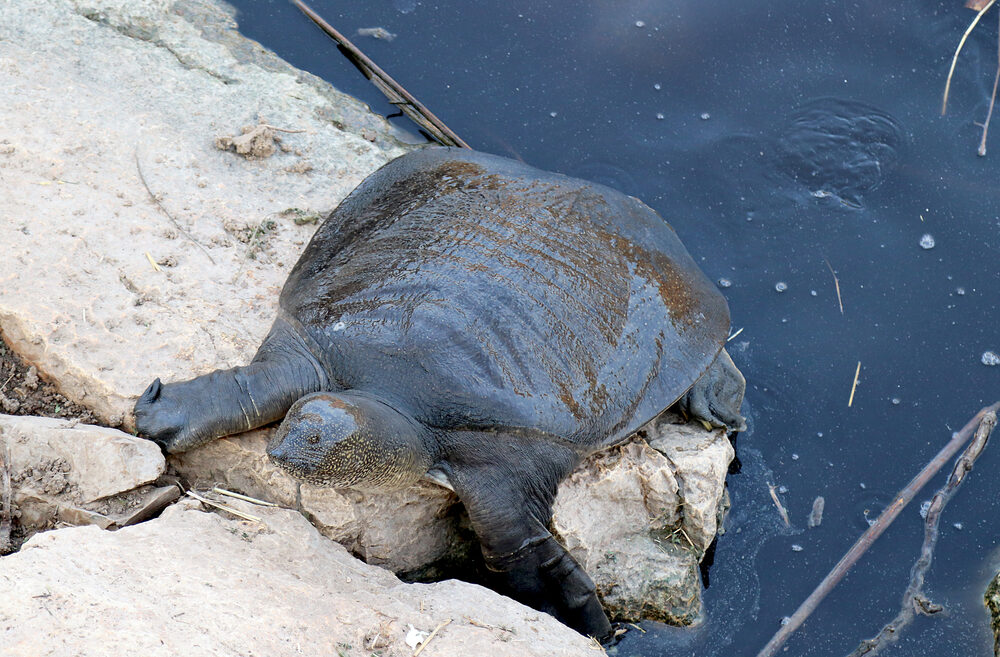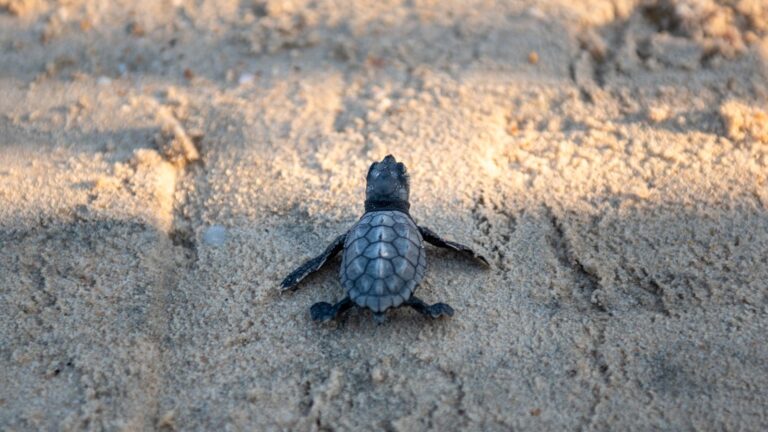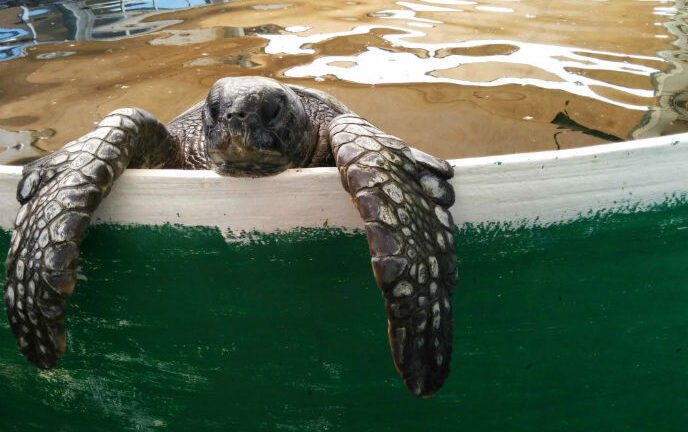In the bustling central district of Israel, in a quiet green spot near the water, five turtles have set up their permanent home, undisturbed by human activity – almost. The location the turtles have chosen as their residence is right next to the Palgey Sharon wastewater treatment plant.
The turtles in question are African softshell turtles (Trionyx triunguis), an endangered species found mainly in Central and West Africa, along the Nile as well as in the Middle East. In Israel, African softshell turtles are found mainly along the coastal streams.
In ancient times, the turtle family included hundreds of species that thrived around the world. Today there are only 22 species left.
The International Union for Conservation of Nature has listed the African softshell turtle as “vulnerable.” The species faces many threats, including poaching, environmental destruction, loss of habitat, and pollution.
In the early 1970s, the situation of the softshell turtles in Israel was grave due to river pollution and accelerated development. The late zoologist Heinrich Mendelssohn initiated their relocation to the Hula Nature Reserve.
Since then, the species’ condition has improved around the coastal streams. However, the fact that an entire colony of softshell turtles thrives in an unexpected place like a wastewater treatment plant is still an unusual and positive event.
An unusual home
The presence of the turtles at the site is not news, but recently new nesting places have been observed.
This is a sign that the turtles do not only enjoy wading through the purified sewage water but are also concerned about the continuity of their species.
“Throughout the years, we knew that there were softshell turtles at the sewage plant, but it was only when the Nature and Parks Authority began a survey along the coastal streams that we realized that plant is home to a whole colony of turtles that also breed,” says Gadi Boord, of the Yarkon River Authority.
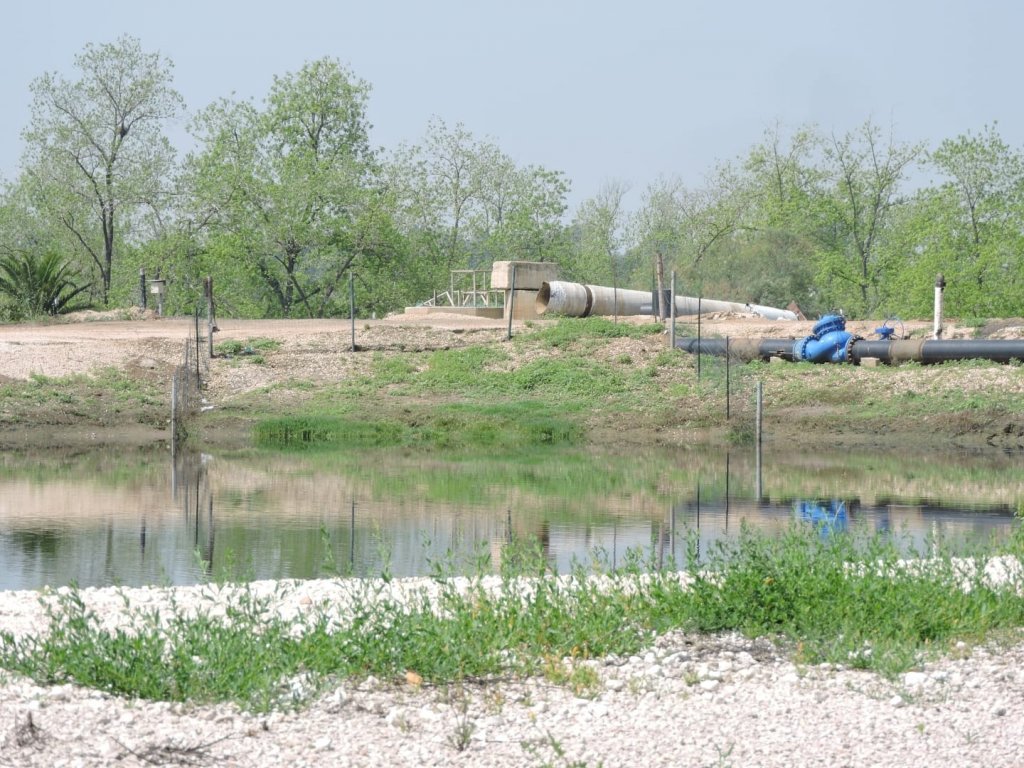
“It is a big thing that here, in a wastewater treatment plant, a globally endangered species has not only found shelter but has been breeding and surviving for many years,” he adds.
At the plant, the turtles reside next to one of the purified effluent pools, where water is of irrigation-use quality (“secondary treatment”).
“Before we designated a place for the animals inside the plant, they would enter empty ponds — which left them, and especially their eggs, exposed to predators such as crows, mongooses and jackals roaming the area,” says Izik Tamam, director of the Palgey Sharon wastewater treatment plant.
“In order to keep turtles away from the empty ponds, we covered them with nets and built a little enclosure for the animals near the effluent pool,” Tamam continues.
“In addition to the turtles, different kinds of bird species come to us throughout the year, like ducks, seagulls and spur-winged lapwings. You can also find water plants here like Potamogeton, which is an indicator of the good water quality. We really created a small ecosystem here, and it’s important for us to maintain it,” Tamam adds.
Turtles in danger
Today, the largest softshell populations in Israel live in the Hula Nature Reserve and the Alexander River National Park. Each of these habitats has only a few dozen individuals.
The situation in other coastal streams and rivers is even more concerning: Only a few have been recorded since the 1970s. However, small populations can also be found in the Jordan River Basin (including the Hula Nature Reserve) due to the relocation in the late 1960s.
“Around the streams of the country there are a number of stable softshell turtle populations, and we are working with various researchers to learn about the genetic variation of these populations so we can find out how to best treat each population,” says Dana Milstein, a wetland and habitats ecologist at the Nature and Parks Authority.
“One of the major problems with softshell turtles in Israel is the large number of predators destroying the nests. For example, in the Yarkon River, predation may reach 100 percent of the nests in a season,” Milstein emphasizes.
In the past, the primary predators were mongooses. In recent years, jackals have been the main threat to the turtles, whose population is already small.
Over the years, the softshell turtles in the Yarkon River varied in size, even when the water level was higher than it is today. Each year, five to 15 turtle nests are monitored around the river, but most of them fall victim to predation.
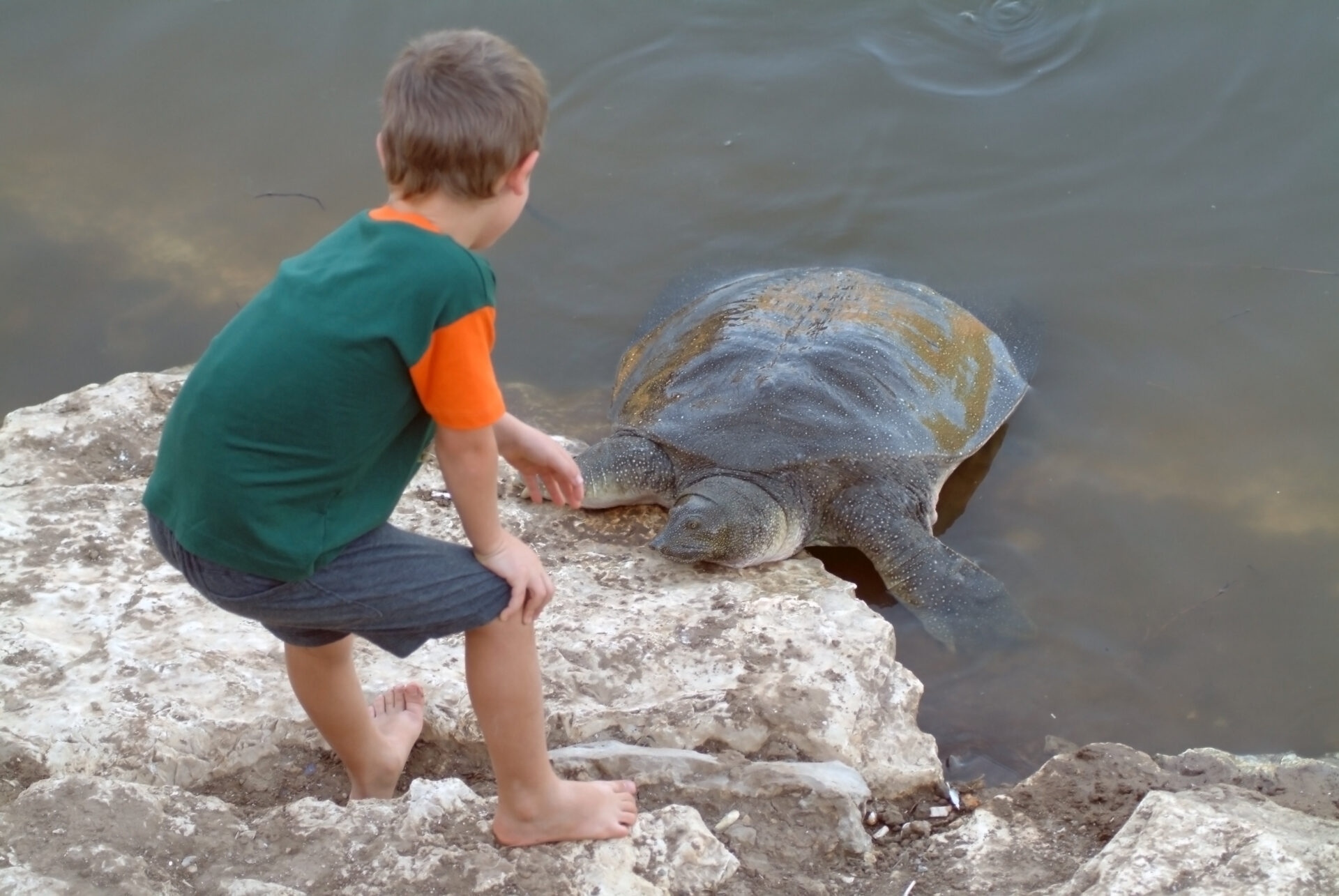
“Another danger the turtles are facing is fishing along the Yarkon River. We have had cases where turtles swallowed a bait and got injured by the hook. If we find them in time, we try to get the hook out, but it often still results in serious injury,” adds Jonathan Raz, chief ecologist of the Yarkon River Authority.
Conservation efforts
“To preserve the turtle populations along the coastal streams, we carry out surveys to monitor the nests. That’s how we found the nesting location at the sewage plant,” says Milstein.
“We also observe nesting characteristics with cameras, and during the breeding season we monitor and map the nests on the river banks and try to figure out the preferred nesting locations so that we can protect them from predation,” she adds.
“It’s important for us to preserve these turtles. They are like sanitation workers, cleaning the streams by eating carcasses and rotten material. Also, it’s a great feeling to know that they live here in the Yarkon,” says Raz.
“The turtles probably reached the sewage plant from one of the rivers in the area. The Yarkon tributaries were previously dry, but in recent decades, treated high-quality effluent has been discharged from the plant. This means a continuous water connection is established between the river systems. It turns these tributaries into a wet ecology corridor that invites animals like turtles, and various plants,” Raz explains.
According to Raz, the presence of the turtles in the sewage plant emphasizes the importance of using streams as ecological corridors and shows that even a wastewater treatment facility can serve as a shelter for animals.
Why not move the turtles to a natural habitat?
We would be happy if the turtle population lived in its natural environment, but since it’s beneficial for them right now, we can use them as a breeding nucleus and as a great gene pool for the future,” says Boord.
“Admittedly, moving them to another place where there is a turtle population — the Yarkon, for example — can increase the population and perhaps even create greater genetic diversity that will strengthen the soft turtle population that lives there," says Milstein.
But for now, we have decided not to touch them and keep the population at its current location while it is breeding. Technically, nests and eggs can always be brought back to the streams,” she concludes.
Netta Nissim writes for the ZAVIT Science and Environment News Agency




